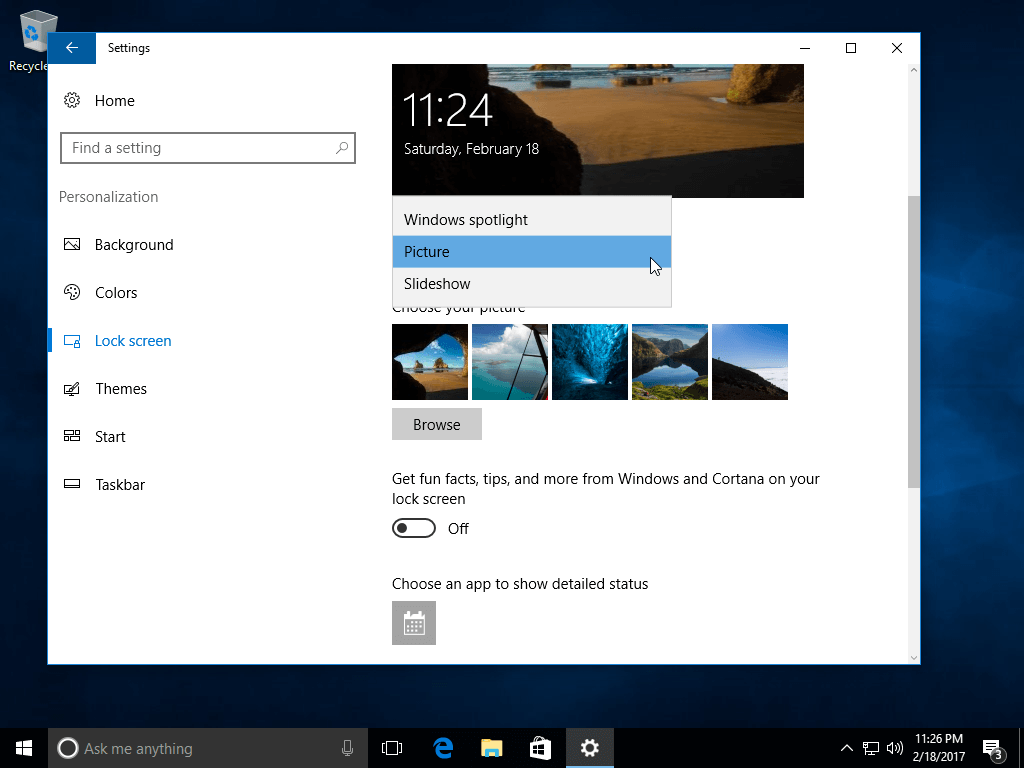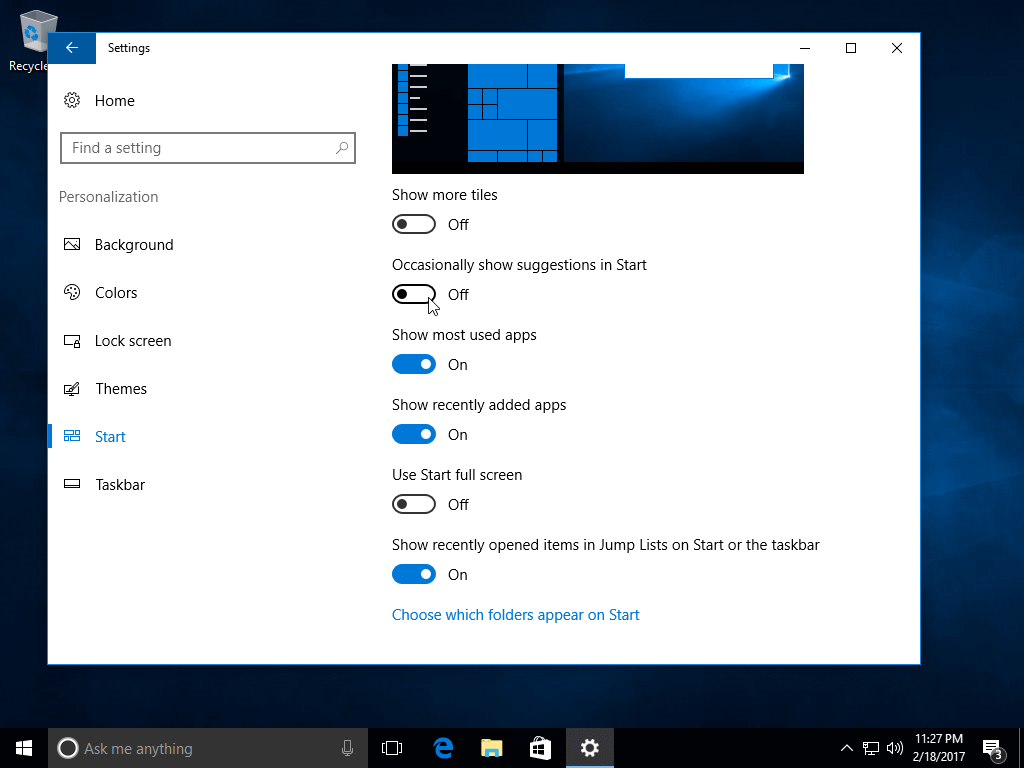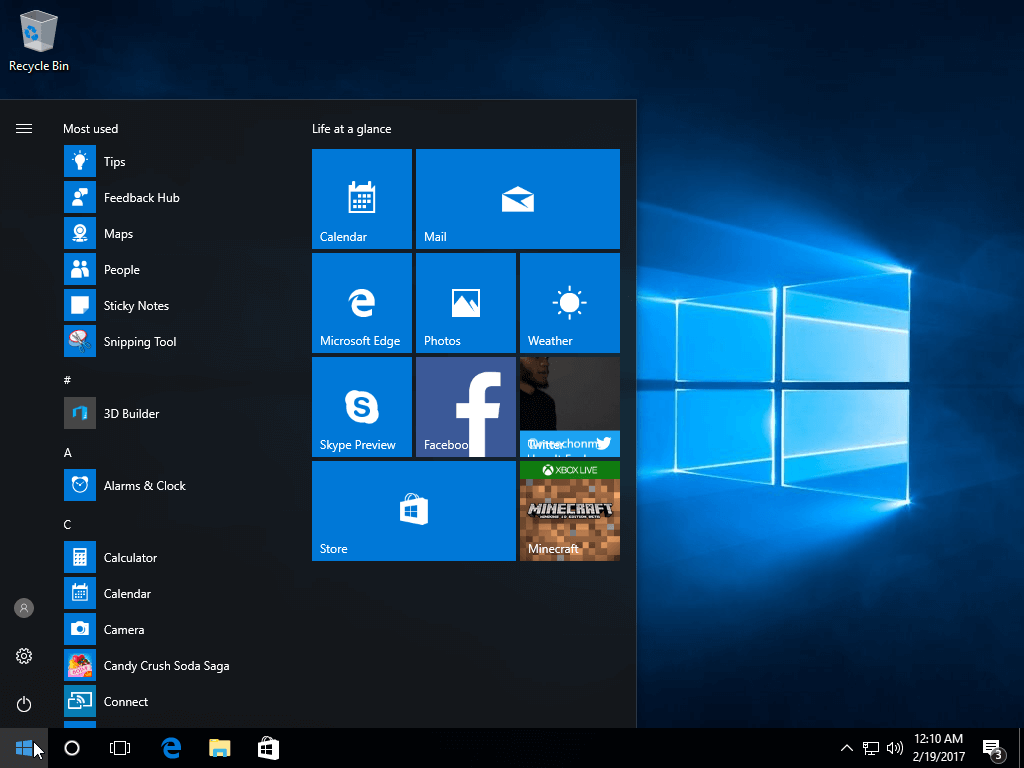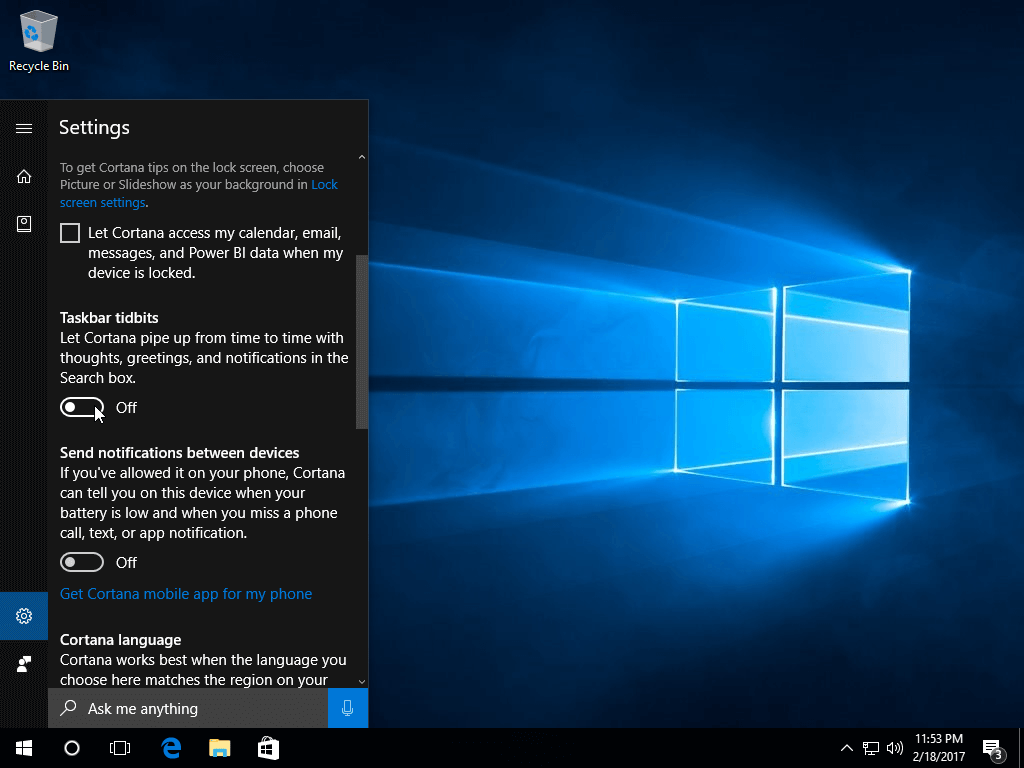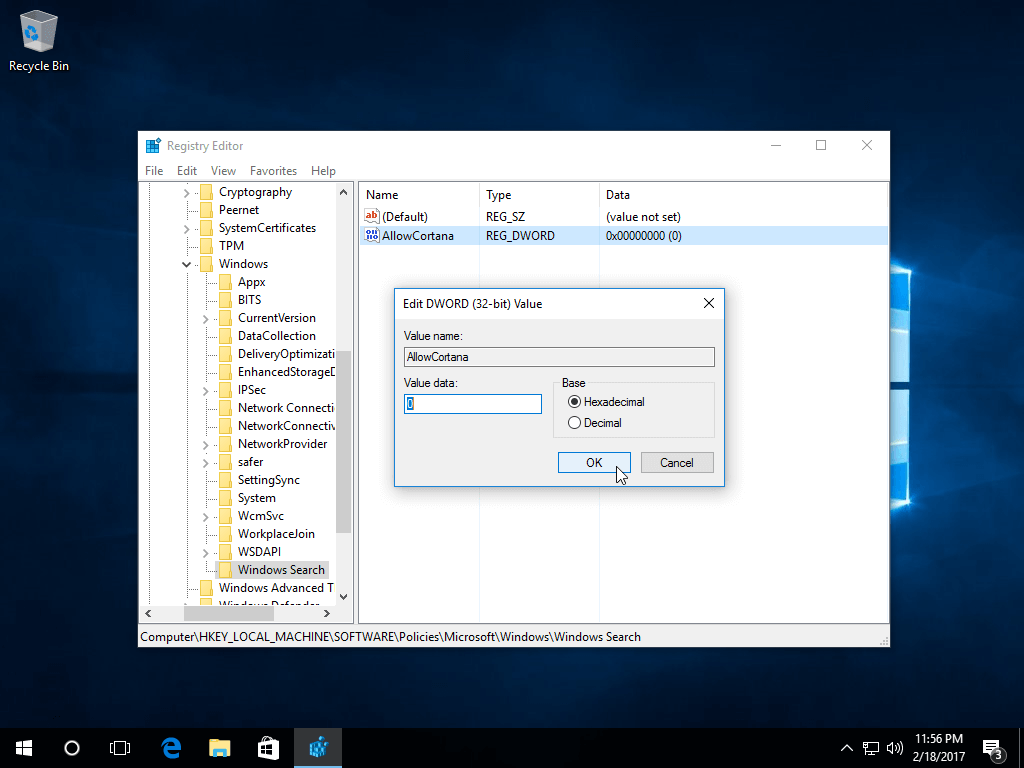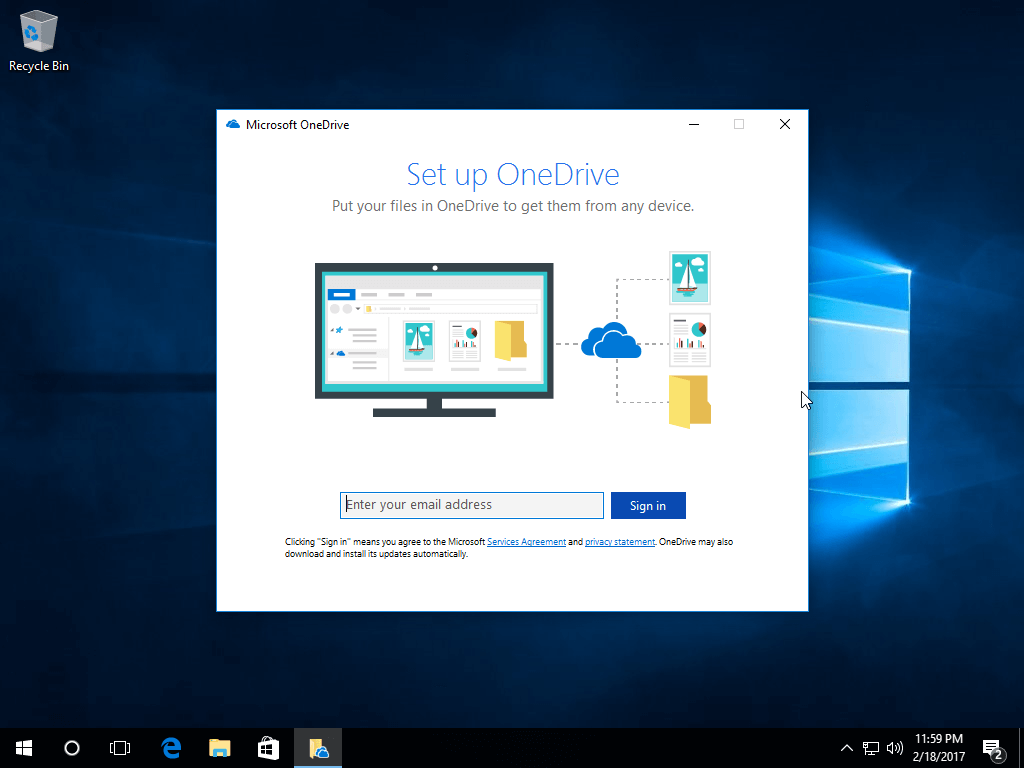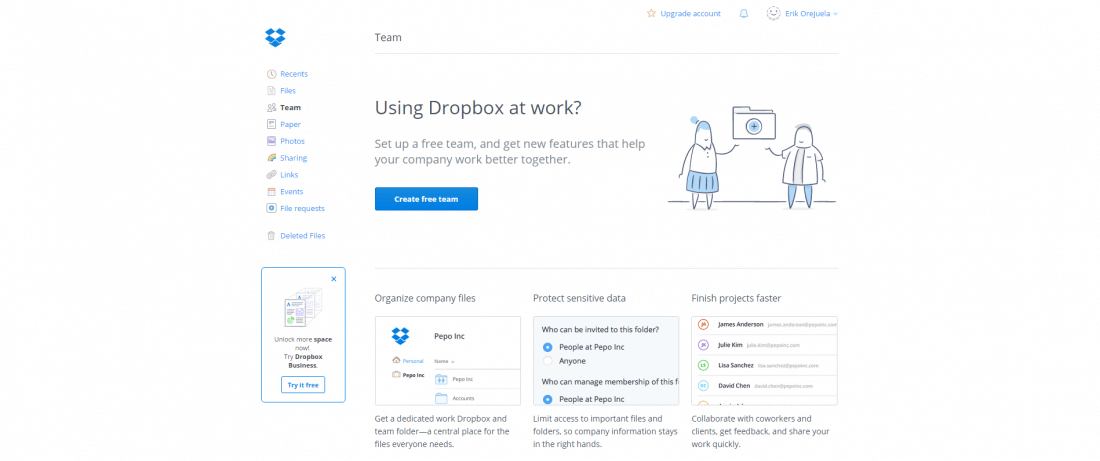Microsoft slowly started to sneak advertisements into the Windows platform with Windows 8, and they’ve only crept up further in Windows 10. From so-called suggested apps in the Start menu, to nagging taskbar notifications, and even full screen ads on users’ lock screens, Microsoft seems dead-set on figuring out new ways to promote and monetize its products.
Thankfully it's easy to shut down most of these annoyances if you know where to look.
Disable lock screen ads
To get rid of lock screen ads you’ll need to disable Windows Spotlight, which is the default option for the lock screen background and displays different background images each day. It also suggests Windows 10 features you may have not tried yet, throwing the occasional ad in the mix.
To turn off Windows Spotlight head to Settings > Personalization > Lock Screen and set the background to “Picture” or “Slideshow” instead of Windows Spotlight. Right below this you find an option to switch off “fun facts, tips, and more from Windows and Cortana on your lock screen.”
Banish Start menu 'suggestions' and other tweaks
It’s great that the Start menu is back in Windows 10, it's still not perfect, but it keeps receiving tweaks and the tiles UI makes it convenient to access your most frequently used applications and programs. It may also serve as prime real estate for advertisers, taking up valuable space in your Start menu.
To prevent annoying ads and suggestions from cropping up in your Start menu, head to Settings > Personalization > Start and set the “Occasionally show suggestions in Start” setting to “Off”.
If you are not a huge fan of Live tiles you can turn them off by right clicking on a tile and selecting the option from the context menu, or you can select “Unpin from Start” to get rid of the tile entirely.
By unpinning all tiles on the right side you can make a single column Start menu and regain some real estate as well. Or if you would prefer to have a Windows 7-style Start menu there are a handful of third party tools worth checking out, including
Start10 or the free
Classic Shell.
Disable 'Get Office' notifications
Windows 10 users who don't have Microsoft Office installed are offered to try Office 365, the subscription-based version of the ubiquitous productivity suite, and enjoy a month-long free trial. This is done by a “Get Office” application that sits there for the sole purpose of promoting it.
To stop these notifications head to Settings > System > Notifications & Actions and switch off notifications for the “Get Office” app. And while you are here you can also disable the “Get tips, tricks, and suggestions as you use Windows” option from the same screen.
But going back to the Get Office application, you can also uninstall this from the system by going into the Start Menu, right clicking on the app and then selecting Uninstall. To make sure it doesn’t automatically install itself again after a restart, search for “Windows PowerShell”, rick-click on the icon and choose “Run as Administrator”. Then execute the following command:
Get-AppxPackage|? name -like MicrosoftOfficeHub|remove-appxpackage
Make Cortana less prominent or kill it altogether
The search box on the Windows taskbar takes up too much space for something that you can just as easily do by pressing the Windows key and start typing. Windows lets you either hide it or reduce it to an icon to open up Cortana. Right-click anywhere on the taskbar and point to Cortana on the contextual menu to pick your preferred setting.
Microsoft’s intelligent personal assistant can be annoyingly persistent to get your attention, and will bounce or show notifications and tips from time to time encouraging you to use it. You can curb her enthusiasm by clicking on the Cortana bar (or button), head to settings and disable “Taskbar Tidbits”.
Microsoft removed the option to switch off Cortana with the Anniversary Update, but if you would prefer your search to stay focused on local files, settings, and apps you can still shut down the assistant through Windows Registry — or the Group Policy Editor too if you have Windows 10 Pro or Enterprise.
You can open the Registry Editor by pressing Windows+R on your keyboard and typing “regedit”.
Navigate to HKEY_LOCAL_MACHINE\SOFTWARE\Policies\Microsoft\Windows\Windows Search. If you don’t see a “Windows Search” folder, right click the Windows folder and create a new key named “Windows Search”. Then right-click this newly created folder in the left pane and select New > DWORD (32-bit) Value. Name the value “AllowCortana”. Double-click it and set the value to “0”.
You can now close the editor. The changes will take effect after signing out and back again.
Shut down OneDrive completely
OneDrive is tightly built into Windows 10. It has its own node in File Explorer, and the OneDrive sync client runs automatically at startup, asking you to sign in. Of course, you don’t have to use OneDrive if you prefer a cloud service from another provider, like Dropbox or Google Drive, but you can’t uninstall it like a normal app. And while you can change OneDrive settings so that the sync client doesn't run automatically at startup, that still leaves the OneDrive icon in the navigation pane of File Explorer.
Windows 10 Pro or Enterprise users can use the Group Policy Editor to completely shut off OneDrive. The setting in question can be found under Computer Configuration > Administrative Templates > Windows Components > OneDrive, where you just need to double-click the policy ‘Prevent The Usage Of OneDrive For File Storage’ and set it to Enabled.
Windows 10 Home users have to edit the registry manually. Press Windows+R on your keyboard and type “regedit” to launch the Registry Editor, then navigate to HKEY_LOCAL_MACHINE\Software \Policies\Microsoft\Windows\OneDrive. If there is no key for OneDrive, you’ll need to right click the Windows folder and create a new key named OneDrive. Add a new DWORD value as DisableFileSyncNGSC and set it to 1. Restart for the new policy to become effective.
 5 days, 5 killer tech tips is a TechSpot monthly feature
5 days, 5 killer tech tips is a TechSpot monthly feature
On the third week of every month, we'll publish 5 killer tech tips, one for each day of the week for a given app, service, or platform.
This week we are uncovering great Windows 10 usability tips and tricks.
- Day 1: Get Rid of Windows 10 Ads, Office Offers and Other Annoyances
- Day 2: 7 Free Apps to Install on a New Windows PC
- Day 3: TBA
- Day 4: TBA
- Day 5: TBA



